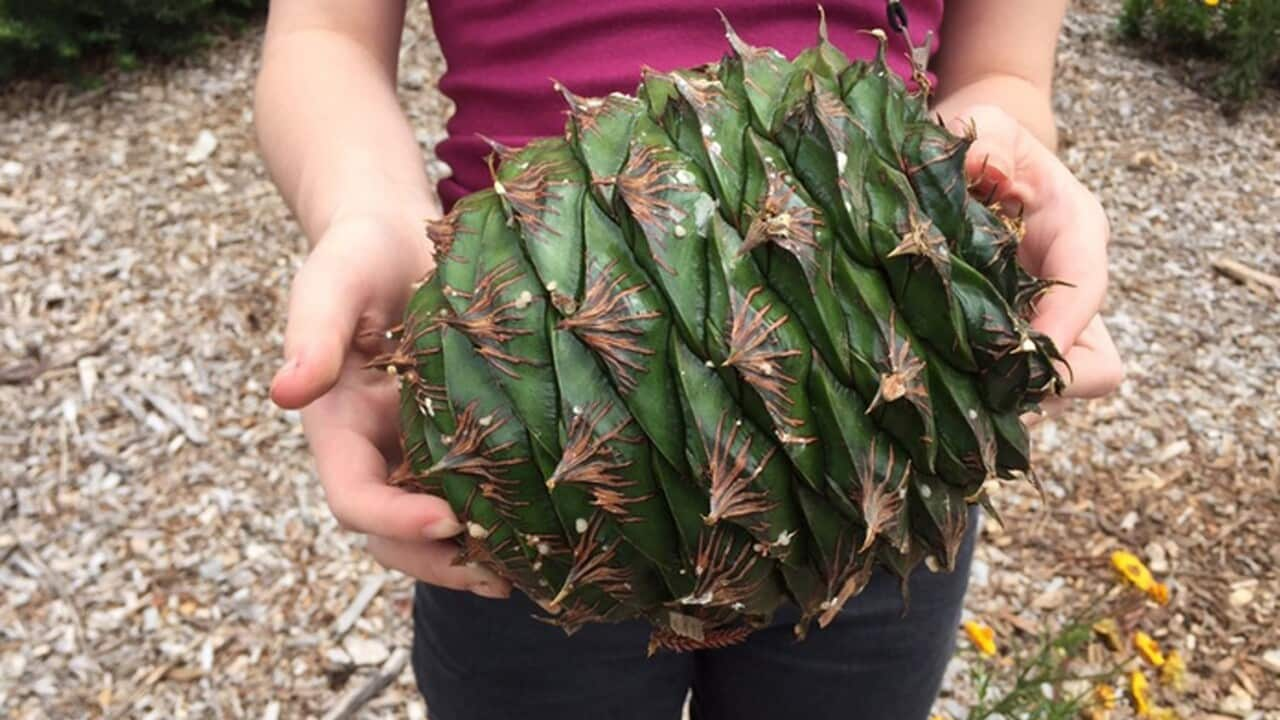For thousands of years, Aboriginal people travelled from across the east coast for the harvest of the bunya nut.
It has always been a culturally significant food, bringing people together and sustaining communities.
Research from earlier this year found Indigenous people increased the spread of the significant bunya pine tree through complex agricultural practices in response to colonisation.
Now, research from the University of Queensland has shown the extent of the bunya nut's nutrients.
Dr Jaqueline Moura Nadolny from UQ’s Queensland Alliance for Agriculture and Food Innovation said the bunya nut (Araucaria bidwillii) was an energy and nutrient dense bushfood with huge commercial potential.

Research found that Indigenous people increased the spread of the bunya pine tree through complex agricultural practices. Credit: The University of Queensland
“Indigenous Australians boiled and roasted them, but they can be eaten straight out of the cone, ground into flour, brewed into tea and even fermented.”
Shannon Bauwens, a Wakka Wakka man and Cultural Services Coordinator for the Bunya People’s Aboriginal Corporation has welcomed the research.
“The bunya nut has a strong cultural significance to Traditional Owners and other Indigenous peoples who gathered for thousands of years in pre-colonial times for feasting and ceremonies,” Mr Bauwens said.
“The Bunya Mountains in southern Queensland are home to the largest known stand of the species in the world, and the trees live for hundreds of years.

Shannon Bauwens says the bunya nut has a strong cultural significance. Credit: The University of Queensland
It first provided food for dinosaurs and then people for thousands of years, but now, Dr Nadolny warns, the prehistoric pine is under threat from phytophthora, a root rot that causes dieback.
“It’s critical new trees are planted, as well as grafted to speed up fruiting to within five or six years," Dr Nadolny said.
“Each tree can produce hundreds of cones, each containing up to 100 nuts.
"Taking measures now to ensure a healthy future for Australia’s bunya trees could lead to showcasing this incredible Indigenous food and its potential to the world."
Bauwens hopes to see a bright future in the food industry for the benefit of mob and the ancient nut.
“Creating an industry surrounding the bunya nut would not only ensure its survival but create a sustainable industry for mob, allowing them to share their knowledge with the community,” Mr Bauwens said.












